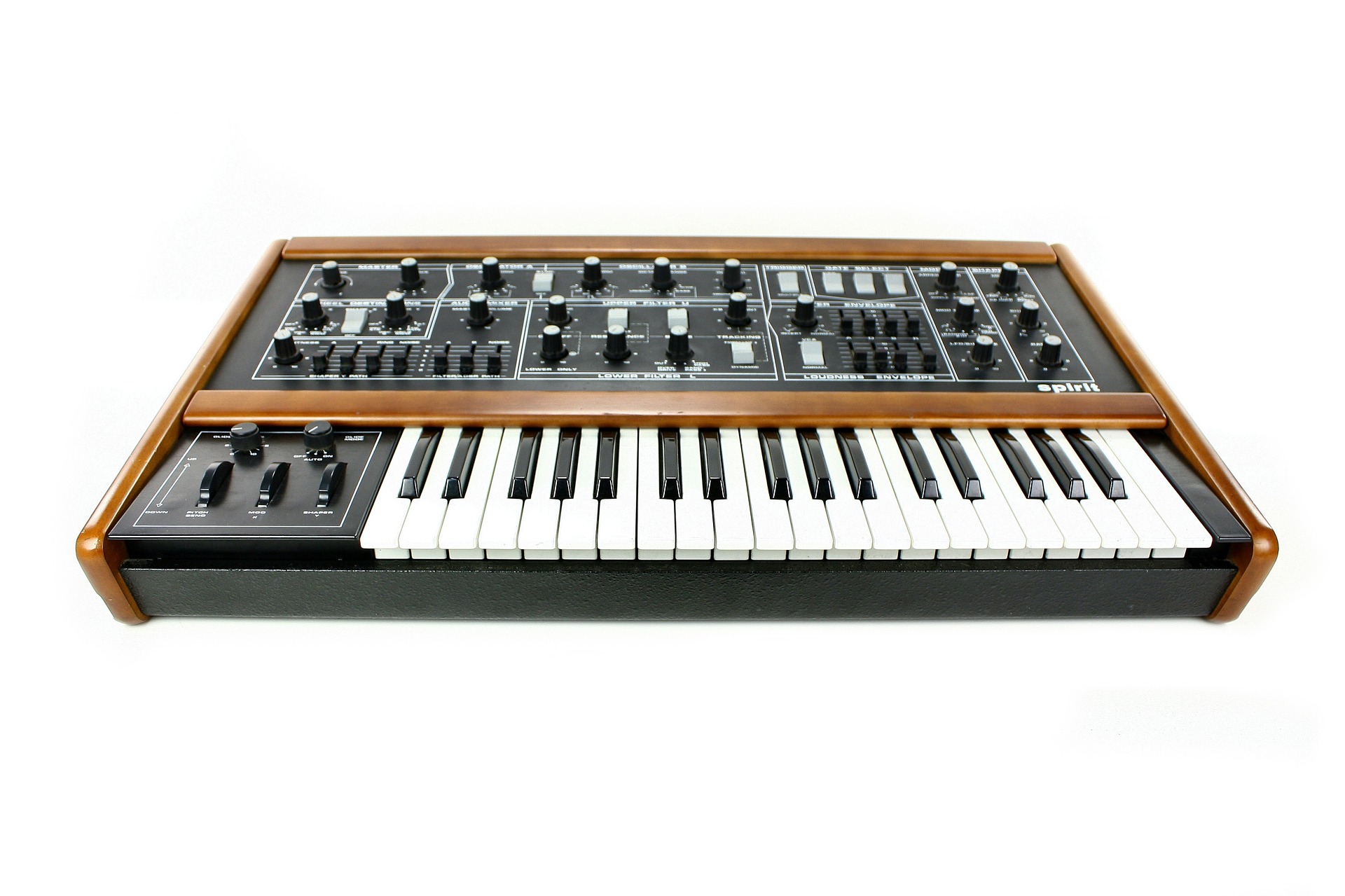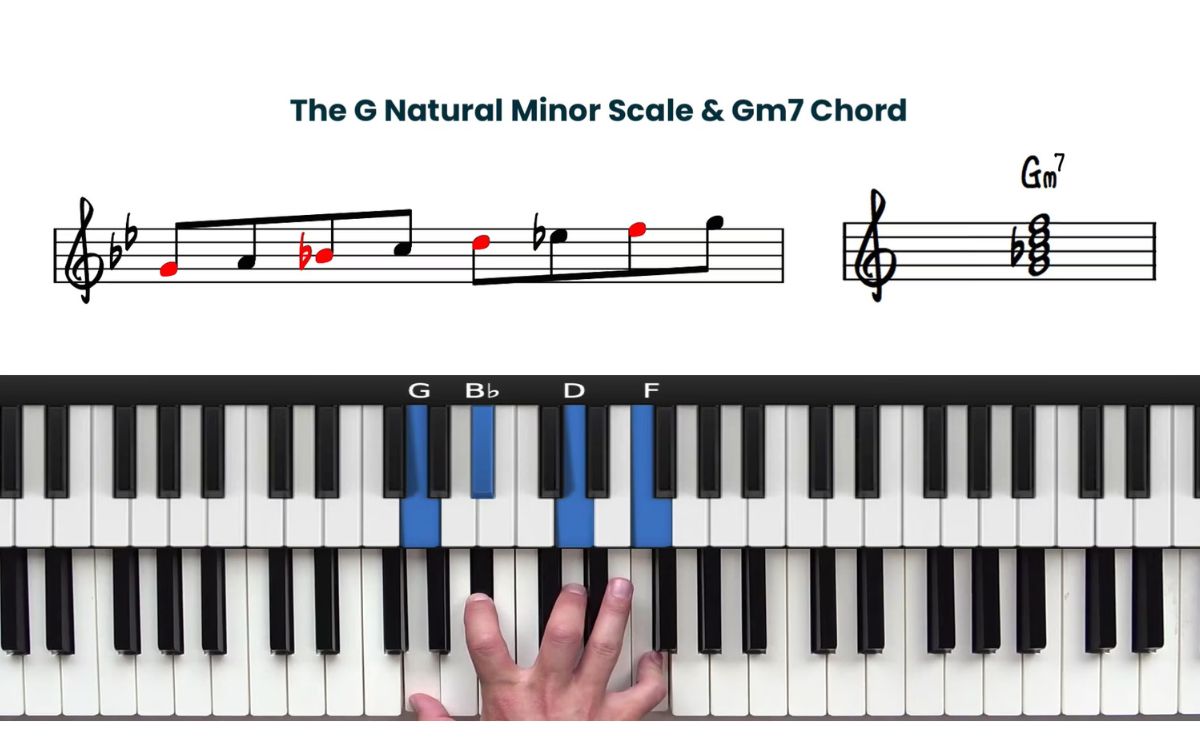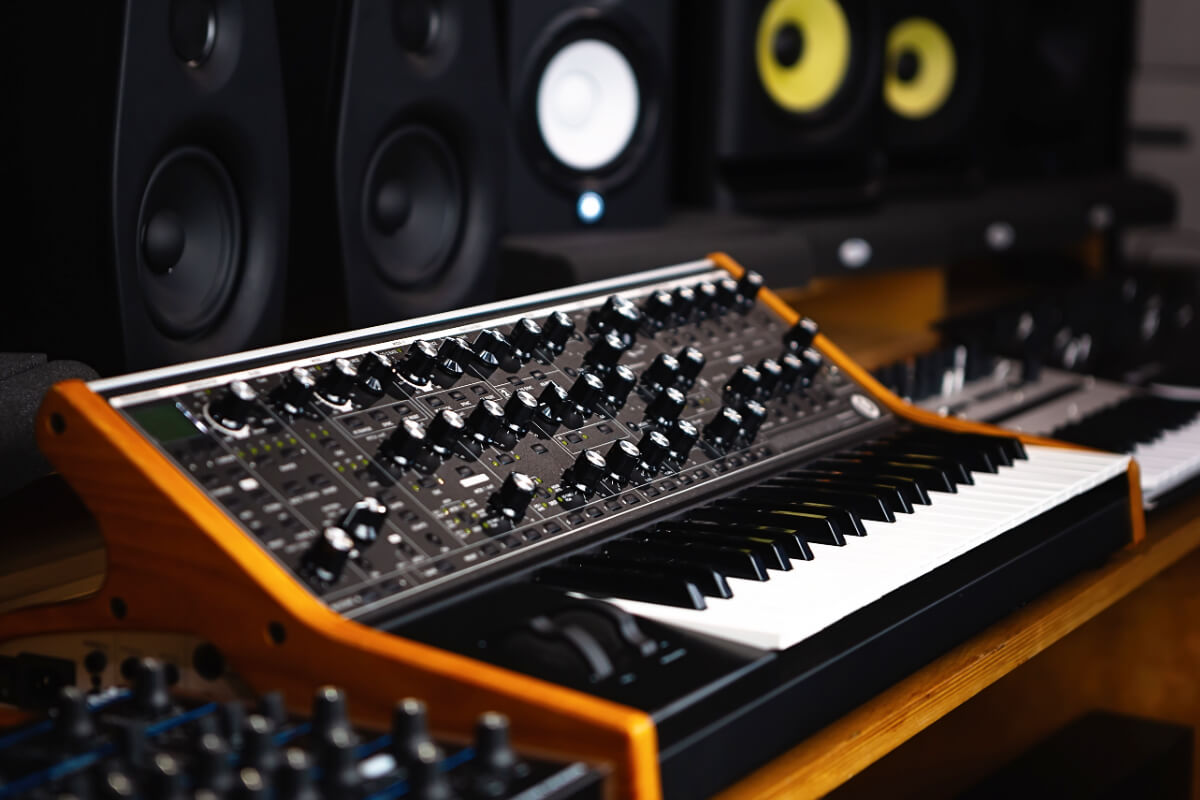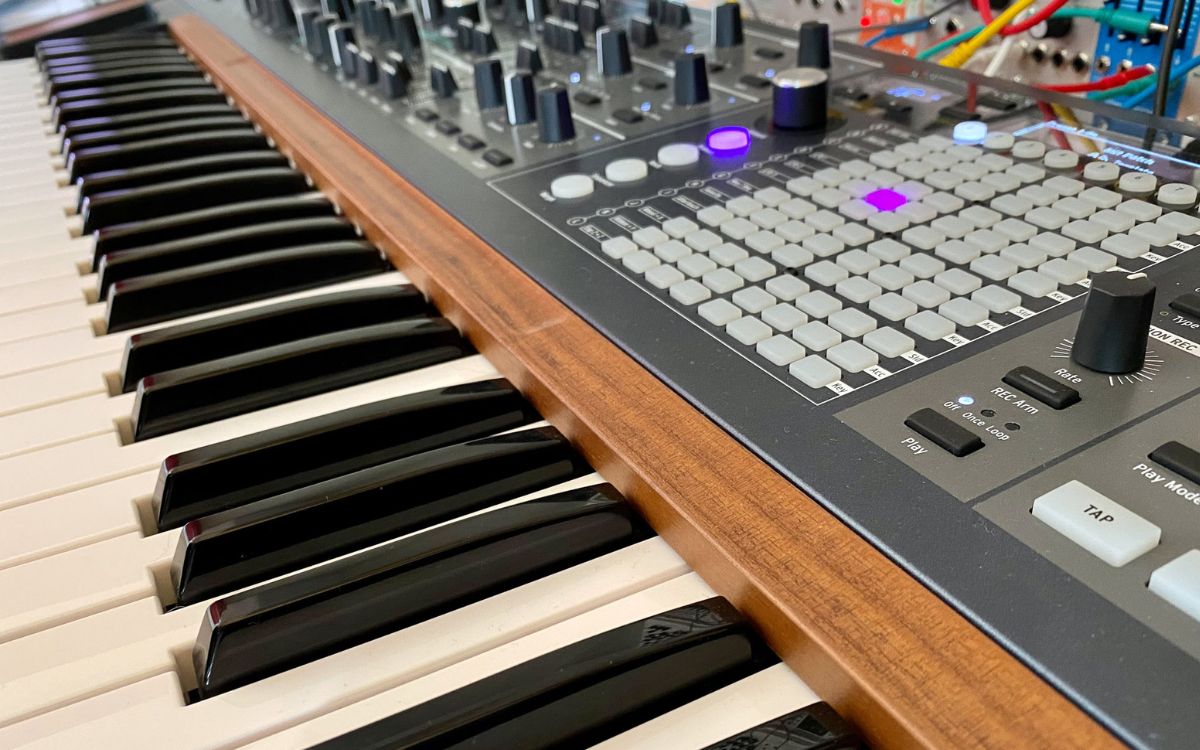Home>Instruments>Synthesizer>What Is A Synthesizer


Synthesizer
What Is A Synthesizer
Modified: January 27, 2024
Discover the fascinating world of synthesizers and learn what a synthesizer is, its functions, and how it's used in music production.
(Many of the links in this article redirect to a specific reviewed product. Your purchase of these products through affiliate links helps to generate commission for AudioLover.com, at no extra cost. Learn more)
Table of Contents
Introduction
Synthesizers are incredibly versatile musical instruments that have shaped the landscape of modern music. Whether you’re a music producer, a keyboardist in a band, or an electronic music enthusiast, understanding synthesizers can greatly enhance your musical journey. In this article, we will delve into the world of synthesizers, exploring their history, components, types, and how they work.
At its core, a synthesizer is an electronic instrument that generates and manipulates sound. Unlike traditional instruments such as guitars or pianos, synthesizers do not produce sound by mechanically vibrating strings or striking keys. Instead, they use electrical signals to generate, modify, and shape sounds.
Synthesizers have been evolving since the early 20th century, with significant advancements in technology and sound design. Originally developed for the purpose of reproducing the sounds of traditional instruments, synthesizers quickly expanded beyond that scope, unlocking a world of sonic possibilities.
Today, synthesizers are widely used across a variety of musical genres and can be found in studios, concert stages, and even in the hands of street performers. From creating sweeping pads and atmospheric textures to crafting intricate melodies and pulsating basslines, synthesizers have become indispensable tools for musicians and sound designers alike.
Whether you are new to the world of synthesizers or have some experience, this article aims to provide you with a comprehensive understanding of these incredible instruments. Strap in, as we embark on a sonic journey through the mesmerizing world of synthesizers.
History of Synthesizers
The roots of synthesizers can be traced back to the early 20th century with the development of electronic musical instruments. It all began with the invention of the theremin by Leon Theremin in 1920. This unique instrument was played without physical contact, using the proximity of the player’s hands to control pitch and volume.
Fast forward to the 1950s and 1960s, when significant advancements in technology paved the way for the modern synthesizer. In 1956, the RCA Mark II Sound Synthesizer was introduced, which utilized vacuum tubes and punched paper tape to generate and manipulate sound. However, it was large, complex, and primarily reserved for academic and experimental use.
In the 1960s, Robert Moog revolutionized the synthesizer industry with the development of the Moog synthesizer. Unlike its predecessors, the Moog synthesizer was smaller, more user-friendly, and commercially available. It gained popularity among musicians and played a pivotal role in defining the sound of iconic albums during that era.
Throughout the 1970s and 1980s, synthesizers became more accessible and affordable, leading to their integration into mainstream music production. Manufacturers such as Roland and Yamaha emerged and introduced groundbreaking synthesizers like the Roland Jupiter-8 and the Yamaha DX7, respectively.
During the 1990s and early 2000s, synthesizers further evolved with the advent of digital technology. Digital synthesizers offered a vast range of sounds, advanced sequencing capabilities, and integration with computer-based music production software.
Today, synthesizers continue to evolve, with a blend of analog and digital technologies. Vintage analog synthesizers are highly sought after for their warm and organic sound, while digital synthesizers offer endless possibilities for sound manipulation and complex sound design.
The history of synthesizers showcases an ongoing quest for innovation, pushing the boundaries of what is possible in music production. From its humble beginnings with the theremin to the sophisticated digital instruments of today, synthesizers have left an indelible mark on the world of music.
Components of a Synthesizer
A synthesizer is composed of various components that work together to generate and shape sound. Understanding these components will give you a deeper insight into how a synthesizer operates and allow you to unleash your creativity with sound design. Let’s explore the key components of a synthesizer:
- Oscillators: Oscillators are the heart of a synthesizer. They generate the basic sound waveforms, such as sine, sawtooth, square, and triangle waves. By manipulating the frequency, waveform, and modulation of the oscillators, you can create a wide range of sounds.
- Filters: Filters shape the timbre of the sound by selectively attenuating or boosting specific frequencies. Common filter types include low-pass, high-pass, and band-pass filters. Adjusting the filter cutoff, resonance, and modulation can drastically alter the character of the sound.
- Amplifiers: Amplifiers control the volume and envelope of the sound. They determine how the sound evolves over time, from the initial attack, decay, sustain, to the release phase (ADSR). By tweaking these parameters, you can shape the dynamics and contour of the sound.
- Modulation Sources: Modulation sources, such as LFOs (Low-Frequency Oscillators) and envelopes, add movement and variation to the sound. They can control parameters such as pitch, filter cutoff, and amplitude. Modulation allows for creating evolving textures, rhythmic patterns, and dynamic effects.
- Effects: Effects processors play a crucial role in enhancing the sound. Common effects include reverb, delay, chorus, and distortion. By applying these effects, you can add depth, spaciousness, and character to your sound.
- Controllers: These are the physical interfaces that allow you to interact with the synthesizer. Common controllers include keyboards, knobs, sliders, and touchpads. They enable you to play notes, adjust parameters, and perform expressive techniques.
- Sequencers: Sequencers allow you to create and manipulate musical patterns. They can record and play back sequences of notes, control parameter changes, and create complex rhythmic patterns. Sequencers are powerful tools for composition and live performance.
These are just some of the key components found in synthesizers. However, it’s important to note that every synthesizer model may have its own unique features and additional components that contribute to its sonic capabilities. Exploring and experimenting with these components will unlock a vast world of sonic possibilities and allow you to shape your own signature sound.
Types of Synthesizers
Synthesizers come in various types, each with its own unique characteristics and sonic capabilities. Here are some of the most common types of synthesizers:
- Analog Synthesizers: Analog synthesizers use analog circuits, voltage-controlled oscillators (VCOs), filters, and amplifiers to generate and manipulate sound. They are known for their warm, rich, and often organic sound. Vintage analog synthesizers, such as the Moog Minimoog and ARP Odyssey, are highly sought after for their unique sonic character.
- Digital Synthesizers: Digital synthesizers utilize digital signal processing (DSP) to generate and modify sounds. They offer a vast range of sounds, precise control, and advanced synthesis techniques. Digital synthesizers, like the Yamaha DX7 and Korg Wavestation, gained popularity for their FM (Frequency Modulation) synthesis and wavetable synthesis capabilities.
- Virtual Analog Synthesizers: Virtual analog synthesizers combine the best of both analog and digital worlds. They simulate the sound and behavior of analog synthesizers using digital technology. Virtual analog synthesizers, such as the Access Virus and Arturia Minibrute, offer the flexibility and convenience of digital control with the warmth and character of analog sound.
- Modular Synthesizers: Modular synthesizers consist of individual modules that can be patched and interconnected to create complex sonic architectures. They offer unparalleled flexibility and customization options. Modular synthesizers, like the Eurorack format, allow musicians to design and build their own unique synthesizer setups.
- Sampling Synthesizers: Sampling synthesizers use digital technology to playback pre-recorded sounds or samples. They can replicate the sound of real instruments, vocals, or any other recorded audio. Sampling synthesizers, such as the Akai MPC series and Native Instruments Kontakt, are widely used for sound libraries, beat-making, and sample-based music production.
- Software Synthesizers: Software synthesizers, also known as virtual instruments or soft synths, are computer-based synthesizers that run as plugins or standalone applications. They offer a wide range of synthesis techniques, effects, and sound libraries. Popular software synthesizers include Native Instruments Massive, Xfer Serum, and Spectrasonics Omnisphere.
These are just a few examples of different types of synthesizers. With advancements in technology, hybrid synthesizers that combine multiple synthesis methods have also become popular. The choice of synthesizer type ultimately depends on personal preference, desired sound, and intended use. Whether you prefer the warmth of analog sounds, the versatility of digital synthesis, or the infinite possibilities of software synths, there is a synthesizer type out there to suit your needs.
How a Synthesizer Works
Understanding how a synthesizer works will give you the knowledge and tools to create unique sounds and push the boundaries of your creativity. While the specific workings may vary between different synthesizer models, the basic principles remain the same. Here’s an overview of how a synthesizer operates:
- Oscillator Generation: The process begins with the generation of sound waveforms by oscillators. These oscillators produce basic waveforms such as sine, sawtooth, square, and triangle waves. The user can control the pitch, waveform type, and modulation of the oscillators.
- Signal Manipulation: Once the sound waveforms are generated, various signal manipulation techniques are applied to shape and modify the sound. This includes using filters to remove or emphasize specific frequencies, amplifiers to control the volume and dynamics, and modulation sources to add movement and variation to the sound.
- Effects Processing: Many synthesizers offer built-in effects processors that allow you to enhance and sculpt the sound further. Effects such as reverb, delay, chorus, and distortion can be applied to add depth, space, and character to the sound.
- Control and Interface: Synthesizers provide users with a range of controls and interfaces to interact with the instrument. This includes a keyboard for playing notes, knobs and sliders to adjust parameters, modulation wheels or joysticks for real-time control, and sequencers for creating and manipulating musical patterns.
- MIDI Integration: MIDI (Musical Instrument Digital Interface) allows synthesizers to communicate with other devices. It enables you to control multiple synthesizers, connect to computers for recording and sequencing, and synchronize with other MIDI-compatible instruments or equipment.
By combining these elements and experimenting with different settings and configurations, you can create an endless variety of sounds. Synthesizers offer immense flexibility and control over every aspect of sound generation and manipulation, empowering you to create unique textures, evolving pads, rhythmic sequences, and expressive lead sounds.
It’s important to note that every synthesizer may have its own unique features and methods of operation, so it’s essential to familiarize yourself with the specific controls and parameters of the synthesizer you are using. By exploring and experimenting, you will unlock the full potential of your synthesizer and embark on a sonic journey limited only by your imagination.
Popular Uses of Synthesizers
Synthesizers have found their place in a wide range of musical genres and production environments. Their versatility and sonic capabilities make them invaluable tools for musicians, producers, and sound designers. Let’s explore some of the popular uses of synthesizers:
- Electronic Music Production: Synthesizers have played a pivotal role in the creation of electronic music genres such as techno, house, and EDM. From pulsating basslines to complex soundscapes and energetic leads, synthesizers form the foundation of electronic music production.
- Film and Television Scores: Synthesizers are widely used in film and television soundtracks to create atmospheric textures, futuristic sound effects, and memorable themes. They bring depth and emotion to visual storytelling and enhance the overall cinematic experience.
- Pop and Rock Music: Synthesizers have left an indelible mark on pop and rock music. From iconic synth hooks and catchy melodies to lush pads and soaring solos, synthesizers add layers of sonic richness and contribute to the unique sound of many pop and rock songs.
- Ambient and Experimental Music: Synthesizers are synonymous with the creation of ambient and experimental music. Their ability to produce ethereal textures, evolving drones, and otherworldly sounds make them ideal for creating immersive sonic landscapes and pushing the boundaries of musical expression.
- Live Performances: Synthesizers are widely used in live performances, allowing musicians to bring studio-quality sounds to the stage. Whether as the main instrument or as a complementary element within a band setup, synthesizers provide endless possibilities for live improvisation and sonic exploration.
- Sound Design and Soundtracks: Synthesizers are essential tools for sound designers, allowing them to create custom sounds for video games, commercials, and other multimedia projects. They are instrumental in crafting unique sound effects, creating futuristic soundscapes, and shaping the overall sonic identity of a production.
These are just a few examples of the many popular uses of synthesizers. The versatility of synthesizers allows for their integration into various musical genres and production contexts. Whether you’re a professional musician, a hobbyist producer, or a sound designer, synthesizers offer endless possibilities for creative expression and sonic exploration.
Notable Synthesizer Brands
The world of synthesizers is filled with renowned manufacturers who have contributed significantly to the development and innovation of these instruments. Here are some of the notable synthesizer brands:
- Moog Music: Moog synthesizers are synonymous with the birth of analog synthesis. Founded by Robert Moog, Moog Music has been creating iconic synthesizers since the 1960s. Their instruments, such as the Minimoog Model D and the Moog Voyager, are highly regarded for their rich sound and intuitive interface.
- Korg: Korg is a pioneer in the world of synthesizers, known for their innovative designs and cutting-edge technology. They have produced a wide range of acclaimed synthesizers, including the Korg MS-20, Korg M1, and the more recent Korg Prologue and Korg Minilogue XD.
- Roland: Roland has been a major player in the synthesizer market for decades. Their synthesizers have made a lasting impact across various genres. The Roland Juno series, Roland Jupiter-8, and Roland D-50 are just a few examples of their legendary synthesizers.
- Sequential: Sequential, formerly known as Sequential Circuits, is renowned for their groundbreaking analog synthesizers. Instruments like the Prophet-5 and Prophet-6 have become iconic, known for their lush sound and advanced features.
- Access Music: Access Music is known for the popular Virus series of synthesizers. These virtual analog synthesizers have gained a reputation for their powerful sound engine and extensive programmability.
- Arturia: Arturia has earned a strong following with their software emulations of classic analog synthesizers. They also produce their hardware synthesizers, such as the Arturia MatrixBrute, which combines analog and digital technology.
- Elektron: Elektron is recognized for their innovative and powerful synthesizers and grooveboxes. Instruments like the Elektron Analog Four and Digitakt offer unique sound-shaping capabilities and advanced sequencing features.
These brands represent just a fraction of the many influential players in the synthesizer market. Each brand brings its own unique approach, sound quality, and design philosophy to the table, catering to the diverse needs and preferences of musicians and producers.
It’s worth noting that this list is by no means exhaustive, and new synthesizer brands and models emerge regularly, continuing to push the boundaries of sound generation and innovation. Whether you’re a fan of vintage analog synths or cutting-edge digital technology, there’s a brand and synthesizer out there to suit your musical needs and inspire your creativity.
Future of Synthesizers
The future of synthesizers holds exciting possibilities as advancements in technology continue to shape the landscape of music production. Here are some key areas where we can expect to see developments in the future:
- Hybrid Instruments: The blending of analog and digital technologies has already become prevalent in the world of synthesizers. This trend is likely to continue, with manufacturers exploring new ways to combine the warm and organic sound of analog circuitry with the flexibility and versatility of digital processing.
- Seamless Integration with Software: The integration between hardware synthesizers and software is set to become even more seamless. MIDI and DAW (Digital Audio Workstation) integration will continue to improve, enabling musicians to effortlessly combine the tactile experience of hardware controls with the convenience and power of software-based production environments.
- Virtual Reality (VR) and Augmented Reality (AR) Integration: With the rise of VR and AR technologies, synthesizers may find new ways to immerse musicians in virtual musical environments. Imagine manipulating sound in a 3D virtual space or visually interacting with synthesized elements in augmented reality. The possibilities for creative expression and performance are vast.
- Advancements in Sound Generation: As computational power increases, synthesizers will have access to more complex algorithms and sophisticated sound engines. This will lead to the development of new synthesis techniques, unique sound manipulation capabilities, and the ability to mimic real-world instruments with even greater accuracy.
- Intelligent Sound Design and Preset Management: Machine learning and artificial intelligence could revolutionize sound design and preset management. Synthesizers of the future may have the ability to analyze and adapt to a musician’s playing style and preferences, automatically generating personalized presets or suggesting sound options based on the context of the music being created.
- Environmental Sustainability: Synthesizer manufacturers are increasingly focusing on sustainable practices and materials. We can expect to see advancements in energy-efficient designs, use of eco-friendly materials, and reduced carbon footprint in the production and use of synthesizers.
The future of synthesizers holds immense potential for pushing the boundaries of sound creation, performance, and musical expression. As technology continues to evolve, synthesizers will remain at the forefront of innovation, driving the creation of new sounds and inspiring musicians and producers to explore uncharted sonic territories.
Ultimately, the future of synthesizers is shaped not only by technological advancements but also by the creativity and passion of musicians and the demands and preferences of the musical community. It’s an exciting time for the world of synthesizers, and the possibilities ahead are limited only by our imaginations.
Conclusion
Synthesizers have had a profound impact on the world of music, from shaping iconic sounds in different genres to enabling musicians and producers to explore new sonic territories. They have evolved from the early experimental days to become versatile and powerful instruments that continue to push the boundaries of creativity and sound design.
In this article, we have explored the history of synthesizers, delving into their development and the significant milestones along the way. We have also examined the components that make up a synthesizer, as well as different types of synthesizers that cater to various musical needs and preferences.
Understanding how a synthesizer works, from oscillator generation to effects processing, provides insight into their inner workings and empowers musicians to create unique sounds and express their musical ideas with greater depth. Additionally, we have explored the popular uses of synthesizers, highlighting their vital role in electronic music production, film scores, live performances, and sound design.
We have also highlighted notable synthesizer brands that have made a significant impact in the industry, and we anticipate exciting developments in the future, including hybrid instruments, seamless software integration, advancements in sound generation, virtual reality and augmented reality integration, intelligent sound design, and environmental sustainability.
As synthesizers continue to evolve and innovate, they offer endless possibilities for musicians, producers, and sound designers. They unlock a world of sonic exploration, enabling artists to create unique sounds that captivate listeners and push the boundaries of musical expression.
Whether you’re a beginner exploring the world of synthesizers or an experienced musician looking to expand your sonic palette, understanding the history, components, types, and future of synthesizers will undoubtedly enhance your musical journey and inspire your creativity. So, dive into the world of synthesizers, experiment, and let your imagination soar as you create new sonic landscapes and melodies that resonate with your audience.











